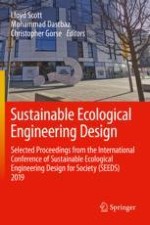2020 | OriginalPaper | Buchkapitel
Who Are the ‘Middle Actors’ in Sustainable Construction and What Do They Need to Know?
verfasst von : Alice Owen, Kathryn B. Janda, Kate Simpson
Erschienen in: Sustainable Ecological Engineering Design
Aktivieren Sie unsere intelligente Suche, um passende Fachinhalte oder Patente zu finden.
Wählen Sie Textabschnitte aus um mit Künstlicher Intelligenz passenden Patente zu finden. powered by
Markieren Sie Textabschnitte, um KI-gestützt weitere passende Inhalte zu finden. powered by
